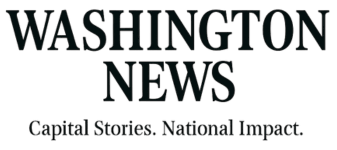Email System Hack: Implications for Journalists in a Digital Age
Last week, newsrooms across the country braced for a storm when reports revealed that a significant email system hack compromised the accounts of numerous journalists. This breach not only exposed sensitive information but also underscored the vulnerabilities facing modern media organizations in an era where digital assaults are alarmingly common. 🔒
A Breach That Hits Home
Targeted by what experts suspect is a well-orchestrated attack from a formerly obscure Oklahoma-based hacking group, journalists’ personal and professional communications have been laid bare. According to industry analysts, the ramifications of this cyber intrusion could be severe, not just for those directly involved but for the integrity and security of journalism at large. As newsrooms grapple with the fallout, questions regarding the adequacy of cybersecurity measures have risen to the forefront.
The State of Cybersecurity in Journalism
A staggering data point reveals that attacks on media organizations have surged by over 45% in the past two years, with phishing and ransomware leading the charge. This spike is a stark reminder of the precarious position journalists find themselves in. These attackers not only aim to steal data but often seek to undermine the fundamental trust that journalism holds in society.
“Journalism is at the forefront of democracy, but it’s increasingly being targeted in its digital form. Each hack represents a significant threat, not just to the organization but to the public’s access to reliable information,” says cybersecurity expert Dr. Helen Miles. 🔍
Behind the Breach: Who Are the Hackers?
Following the hack, cybersecurity specialists have been scrambling to decipher the methods employed by the attackers. Initial investigations suggest the involvement of sophisticated phishing techniques and malware deployment, which have become hallmark tactics of today’s cybercriminals. Government intelligence agencies are now being called in to trace the digital breadcrumbs back to their origin, as fears mount that this could signal a coordinated campaign against media outlets.
The Impact on Journalists
For journalists, the implications go beyond frustration; they strike at the heart of their work. Personal details and active investigations could be exposed, leading to potential repercussions not only for the journalists but also for their sources and stories. Amid this crisis, the risk of self-censorship may arise as journalists may think twice before addressing controversial topics, fearing exposure. 📰
The Call for Enhanced Security Measures
As companies begin to assess their security frameworks post-attack, one consensus emerges: robust cybersecurity measures are imperative. Media organizations must prioritize the following:
- Regular Training: Ongoing cybersecurity training for all staff members to recognize phishing attempts and potential threats.
- Multi-factor Authentication: Implementing multi-factor authentication (MFA) across all accounts to add an extra layer of security.
- Incident Response Plans: Developing comprehensive incident response plans to ensure preparedness against future attacks and minimizing downtime.🚨
The Bigger Picture
The landscape of journalism is transforming rapidly, and with it, so are the threats posed by cyberattacks. The erosion of trust and the risk of misinformation need to be on every newsroom’s radar. As we reflect on this attack, we must remember that protecting journalistic integrity is synonymous with protecting democracy itself. 🔑
In Conclusion
While the full extent of the breach remains to be clarified, its effects resonate deeply within the media industry. This incident serves as a clarion call for enhanced vigilance and resources to fortify cybersecurity. To safeguard their freedom to report critically, journalists must operate in a secure environment where information can flow without fear of retribution or breach. The time for change is now, and the survival of the Fourth Estate depends on it. 🌍











